Themed collection The 1st Sauvage Symposium

Organic luminogens bearing alkyl substituents: design flexibility, adjustable molecular packing, and optimized performance
Recent progress in organic luminogens modified with alkyl groups and their corresponding emissive properties are summarized in this review, which can be depicted by the concept of Molecular Uniting Set Identified Characteristic (MUSIC).
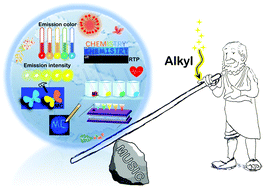
Mater. Chem. Front., 2021,5, 1525-1540
https://doi.org/10.1039/D0QM00851F
Multifunctional organic field effect transistors constructed with photochromic molecules
Introducing photochromic units into the electronic material system allows the reversible tuning of the output signals of a photochromic OFET by light triggers, resulting in a remote-controllable device with potential applications.
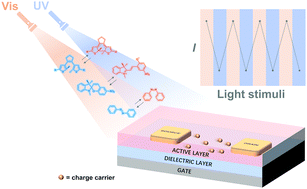
Mater. Chem. Front., 2021,5, 1060-1075
https://doi.org/10.1039/D0QM00567C
Recent progress in utilizing near-infrared J-aggregates for imaging and cancer therapy
Schematic diagram of NIR J-aggregates of various organic dyes as effective bioimaging (fluorescence (FL) or photoacoustic (PA)) and therapeutic agents (PDT or PTT).
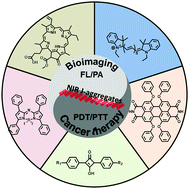
Mater. Chem. Front., 2021,5, 1076-1089
https://doi.org/10.1039/D0QM00557F
Advances in fluorescent sensors for β-galactosidase
This minireview summarizes advances in the molecular design strategy and biological applications of fluorescent probes for β-galactosidase (β-Gal), focusing on detection accuracy enhancement and aggregation-induced emission for background minimization.
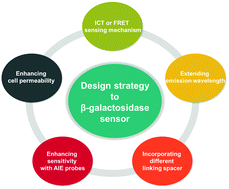
Mater. Chem. Front., 2021,5, 763-774
https://doi.org/10.1039/D0QM00683A
Wash-free detection and bioimaging by AIEgens
Herein, the latest progress of AIEgens for application in wash-free detection and bioimaging was reviewed.
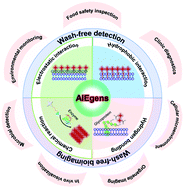
Mater. Chem. Front., 2021,5, 723-743
https://doi.org/10.1039/D0QM00586J
Dinuclear anthracene-containing alkynylplatinum(II) terpyridine complexes with photo-modulated self-assembly behaviors
Facilitated by Pt⋯Pt, π–π stacking and hydrophobic interactions, a new series of dinuclear anthracene-containing alkynylplatinum(II) terpyridine complexes is found to exhibit intriguing photo-modulated self-assembly behaviors upon photooxygenation.

Mater. Chem. Front., 2021,5, 2409-2415
https://doi.org/10.1039/D0QM00972E
Color-tunable luminescent materials via a CB[8]-based supramolecular assembly strategy
This research revealed a class of fluorescent materials which have a response to humidity, based on simple small molecules via a CB[8]-based supramolecular assembly strategy, in which the materials’ fluorescent properties can be dynamically controlled.
![Graphical abstract: Color-tunable luminescent materials via a CB[8]-based supramolecular assembly strategy](/en/Image/Get?imageInfo.ImageType=GA&imageInfo.ImageIdentifier.ManuscriptID=D0QM01029D&imageInfo.ImageIdentifier.Year=2021)
Mater. Chem. Front., 2021,5, 2347-2352
https://doi.org/10.1039/D0QM01029D
A 2D porphyrin-based covalent organic framework with TEMPO for cooperative photocatalysis in selective aerobic oxidation of sulfides
This work reports the cooperative photocatalysis of a two-dimensional covalent organic framework with an electron transfer mediator in a selective organic transformation.
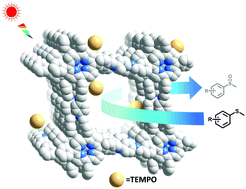
Mater. Chem. Front., 2021,5, 2255-2260
https://doi.org/10.1039/D0QM01076F
Facile construction of well-defined radical metallacycles through coordination-driven self-assembly
In this article, well-defined radical metallacycles were efficiently constructed through coordination-driven self-assembly, which displayed interesting chiral self-sorting behavior as well as very weak radical-based luminescence.
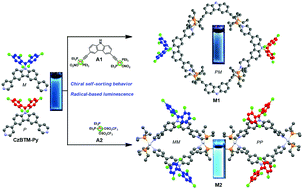
Mater. Chem. Front., 2021,5, 1863-1871
https://doi.org/10.1039/D0QM00992J
Synthesis and short DNA in situ loading and delivery of 4 nm-aperture flexible organic frameworks
Water-soluble hydrazone-connected 3D flexible organic frameworks have been revealed to in situ load and deliver short DNA into normal and cancer cells.
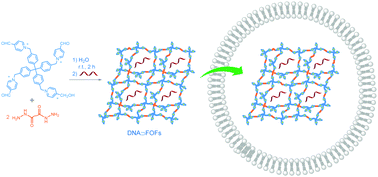
Mater. Chem. Front., 2021,5, 869-875
https://doi.org/10.1039/D0QM00791A
Silica-supported dual-dye nanoprobes for ratiometric hypoxia sensing
A covalently encapsulated dual-dye silica nanoprobe has been developed by a one-pot approach for sensitive ratiometric hypoxia detection with the Ksv value of 243.1 bar−1 and I0/I100 ratio of 153.
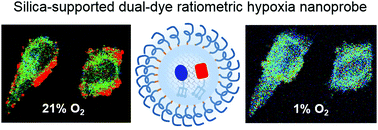
Mater. Chem. Front., 2021,5, 458-464
https://doi.org/10.1039/D0QM00653J
Highly selective removal of heterocyclic impurities from toluene by nonporous adaptive crystals of perethylated pillar[6]arene
We use nonporous adaptive crystals of perethylated pillar[6]arene to adsorb heterocyclic compounds from a mixture of toluene and heterocyclic compounds with high selectivity, ultimately improving the purity of toluene from 96.78% to 99.00%.
![Graphical abstract: Highly selective removal of heterocyclic impurities from toluene by nonporous adaptive crystals of perethylated pillar[6]arene](/en/Image/Get?imageInfo.ImageType=GA&imageInfo.ImageIdentifier.ManuscriptID=D0QM00334D&imageInfo.ImageIdentifier.Year=2020)
Mater. Chem. Front., 2020,4, 2325-2329
https://doi.org/10.1039/D0QM00334D
Exploring molecular motors
The introduction of mechanical functions and controlled motion based on molecular motors and machines offers tremendous opportunities towards the design of dynamic molecular systems and responsive materials.
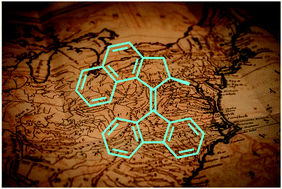
Mater. Chem. Front., 2021,5, 2900-2906
https://doi.org/10.1039/D0QM01091J
About this collection
The 1st Sauvage Symposium was held at Wuhan University on January 2020. It presented the outstanding research from leading experts in the field of molecular science, including molecular design, synthesis and aggregation as well as their applications on optoelectronics, bio-imaging and diagnosis. This collection highlights the fantastic work by the symposium speakers.
Guest Editors: Zhen Li (Wuhan University), Cheng Wang (Wuhan University), Dahui Qu (East China University of Science & Technology)
More articles will be added as soon as they are published.